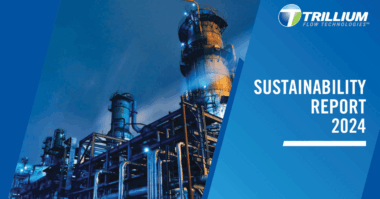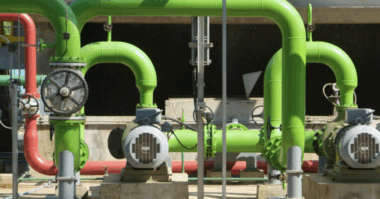Predictive maintenance (PdM) is an advanced, data-driven asset management strategy that relies on sensor data to monitor the performances of different equipment. The sensors detect anomalies, underlying defects, and signs of deterioration that may affect the availability and reliability of equipment. Companies subject equipment performance data to a series of algorithms to predict the probability of asset failure – in roder to plan and implement corrective measures.
Predictive maintenance is vital for pump maintenance. Some facilities utilize tens to hundreds of pumps for daily operations. Pumps and auxiliary equipment must always operate at optimal levels. A PdM program streamlines maintenance work and prevents unexpected downtime. The program reduces the cost of pump ownership and minimizes energy utilization.
A PdM program relies on other technologies to work. Advanced systems collect, store and analyze pump performance data. PdM requires a stable computerized maintenance management system (CMMS) that automates maintenance tasks. It also relies on the Internet of Things (IoT) for communication between sensors, data management devices, and cloud platforms.
Let us explore how predictive maintenance programs save energy.
Reduces the number of inefficient pumps in a facility
Pumps contain powered electro-mechanical components with suitable tolerances and allowances for optimum performance. A defect lowers the efficiency of these systems, causing increased energy consumption. For instance, a damaged bearing increases mechanical friction between moving parts. The pumping unit struggles and draws more
power from the source to compensate for the defects. If several pumps are suffering from similar anomalies, then energy use increases.
Implementing PdM programs for pumps enables facility managers and engineers to identify defects proactively. They monitor flow rates, conduct vibration analysis and track pumping performance to identify design deviations. Performance data helps them pinpoint defective pump elements, as well as troubleshoot and rectify minor defects before they cause excessive energy consumption or failure.
A PdM program maintains a comprehensive record of all pump maintenance activities. Facility managers leverage the data to monitor recurring anomalies and defects. It enables them to conduct root cause analysis and eliminate frequently occurring faults. Resolving common pump problems keeps energy consumption at predictable levels.
Reduces manual workflows
A shift towards predictive maintenance reduces manual workflows. Technicians have an easy time since sensors handle pump monitoring and troubleshooting. The predictive algorithms cater to maintenance schedules. A PdM program collaborates with CMMS software to automate the generation of work orders, approval and tracking of work orders, and the management of maintenance inventories.
By eliminating manual workflows, companies reduce manual labor across the facility. There is less paperwork and unnecessary movement across the facility. It is easy to inspect multiple assets remotely using centralized systems. The company uses little energy to print papers. They also lower the cost of mechanized transportation within the plant.
Automating workflows reduces delays in approvals and cross-departmental engagements. It means machine defects are resolved as soon as they are identified. It ensures processes remain effective and efficient. When systems run optimally, energy demand is lower.
Improves the accuracy of maintenance activities
Condition-monitoring sensors improve performance tracking and an accurate identification of pump defects. The company installs sensors depending on the parameters they intend to monitor and deduces the reliability of different pumps in the facility or piping network. Sensor data is specific to a particular part and tracks it round the clock. It reduces manual-inspection work and enhances routine and emergency troubleshooting.
Sensors have high accuracy levels compared to manual inspection techniques. Technicians will initiate a temporal breakdown or utilize a redundant system to fix a well-known pump defect. With such accuracy, plant managers control the quality of maintenance work. The corrective measures are targeted and accurate. It eliminates the rework needed to cater to poorly done or deferred maintenance.
Pump maintenance uses different tools that consume varying amounts of energy. Eliminating rework ensures no extra energy usage. It also reduces process and equipment downtime, which would expose occupants to hazardous energy. PdM also facilitates the selection of sustainable redundancy systems.
Enhances real-time performance monitoring of pumps
Plant managers phase out old and inefficient machinery from facilities based on their performance. They quantify performance based on the mean time between repairs and pump maintenance costs. These metrics may be difficult to monitor using manual methods.
A PdM program keeps track of the performances of multiple pumps. It displays the data on a dashboard, and managers can compare the energy consumption and the respective outputs of different pumps. They utilize the data to identify energy-intensive pumping units and assets prone to failure. From this data, the managers and engineers develop a sustainable plan to phase out problematic pumps and optimize pump-operating intervals for excellent energy utilization.
Summing Up
Companies can realize impressive energy savings by shifting to a predictive maintenance strategy. The strategy minimizes and eliminates pump inefficiencies that result in excessive energy consumption. It reduces manual and inaccurate maintenance interventions, keeping the cost of ownership within the required thresholds.
Establishing a robust predictive maintenance schedule requires a mindset shift and the implementation of several technological tools. Companies must identify the objectives of the pump PdM program and invest in relevant solutions with provable return on investment and capabilities to save energy.
Bryan Christiansen is the founder and CEO of Limble CMMS. Limble is a modern, easy-to-use mobile CMMS software that takes the stress and chaos out of maintenance by helping managers organize, automate, and streamline their maintenance operations.




